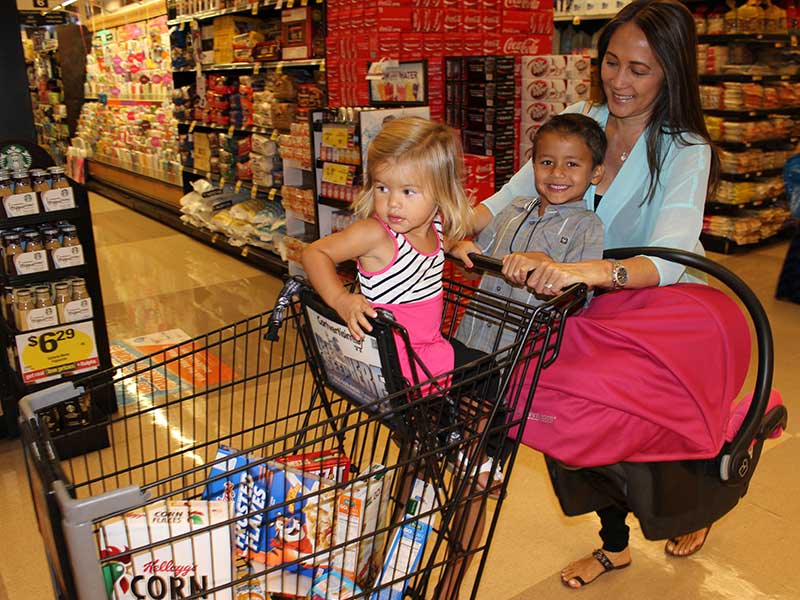Recent Articles
Popular Makes
Body Types
5 Safe Alternatives to Putting a Car Seat on Top of the Shopping Cart
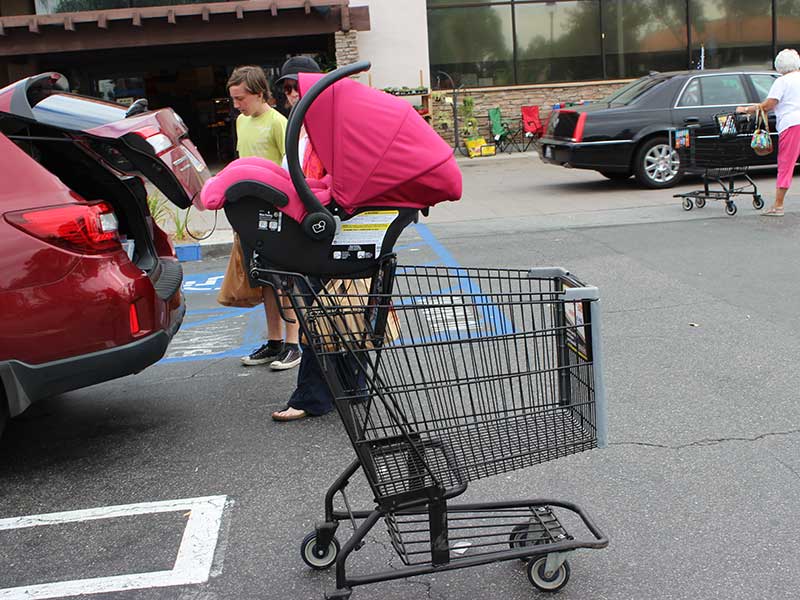
Car_Seat_on_Top_of_Shopping_Cart
Even if it seems to be secure, shopping with the infant seat on top of the cart is never safe. It makes the cart top-heavy. Babies in seats can and have toppled off the top of the cart or had the whole cart tip over on them, leading to skull fractures and other severe injuries. Although it might appear that the seat “clicks” onto the cart securely, it doesn’t stop it from being top-heavy, and attaching the seat to something it’s not designed to attach to can damage the locking mechanism and prevent it from holding the seat into the base in a crash. It seems like everybody does this and therefore it must be safe, but it isn’t. Don’t do it.
On the following pages, I'll explain what you should do instead!
Okay, so, what SHOULD you do?
When I first became a mom, I tried shopping with the seat on top of the cart a few times. I had no idea that it could possibly be dangerous, because people do it all the time. I stopped doing it, though, because it always seemed wobbly and insecure and it made me nervous. I later learned that I was right to worry about it. Even once I knew the dangers, in a way I could see why people did this. I honestly couldn’t think of another practical way to shop with a young infant.
It turns out that there are several alternatives worth considering. Keep reading to learn about shopping safely with your little one.
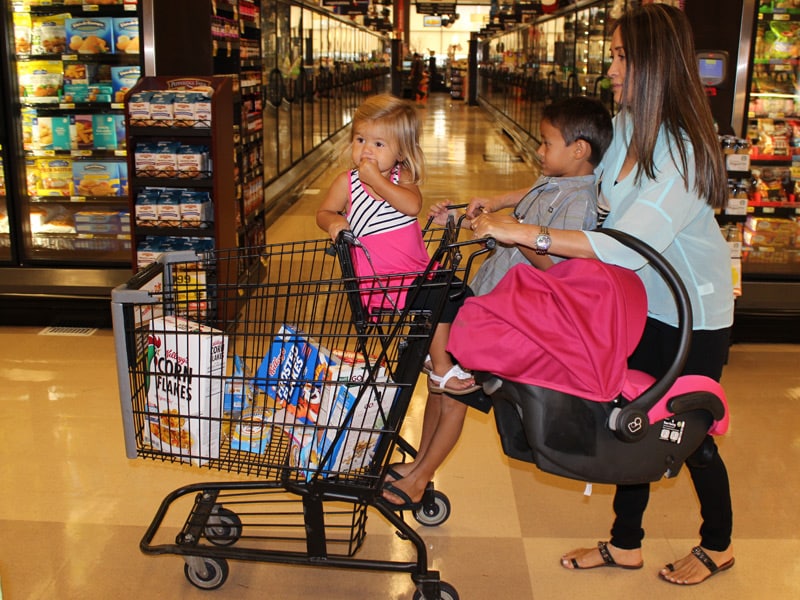
1) Put the seat in the main basket of the cart
This is probably the most straightforward solution. Rather than setting the seat on top of the cart, put it in the large main basket instead. In that position, the seat can’t fall off the cart and it won’t lead to the cart being top-heavy.
Obviously, the seat will take up quite a bit more of your shopping space this way. To fit more things in the cart, some parents take two of the small shopping baskets and place them on the bottom “shelf” area of it. You can also carefully place items around the car seat (clearly these should never be anywhere that they could endanger the baby), utilize the top basket, and/or use two carts. Pushing one cart and pulling another isn’t as unwieldy as you might think (some parents of large families regularly need two carts anyway), and sometimes a store employee may even offer to assist you.

2) Wear the baby in a carrier
Another option for shopping trips is to leave the car seat in the car and use babywear instead. In recent years, babywearing has become a very popular practice for various reasons, and one of them is that it keeps baby close while leaving your hands free for things like shopping. It also takes up no cart space at all, so you can have plenty of room for groceries.
Learn more about babywearing at Babywearing International.

3) Use a stroller
If you don’t have all that many things to pick up, and you have a stroller with a good-sized storage basket underneath, using the basket as a “cart” could be worth a try (just make sure not to overload the basket or load it in a way that could make it tip over). You could also push the stroller while pulling the cart behind you or vice versa.
Some strollers, such as the Contours Options Tandem Stroller, even have an optional shopping basket you can purchase that fits onto the cart. A more econonical choice to check out might be the Joovy Twin Roo, a stroller frame designed to fit two infant seats safely on top with a large basket underneath. You could also just attach one seat to the frame, and that would leave a lot of extra space for your grocieries.
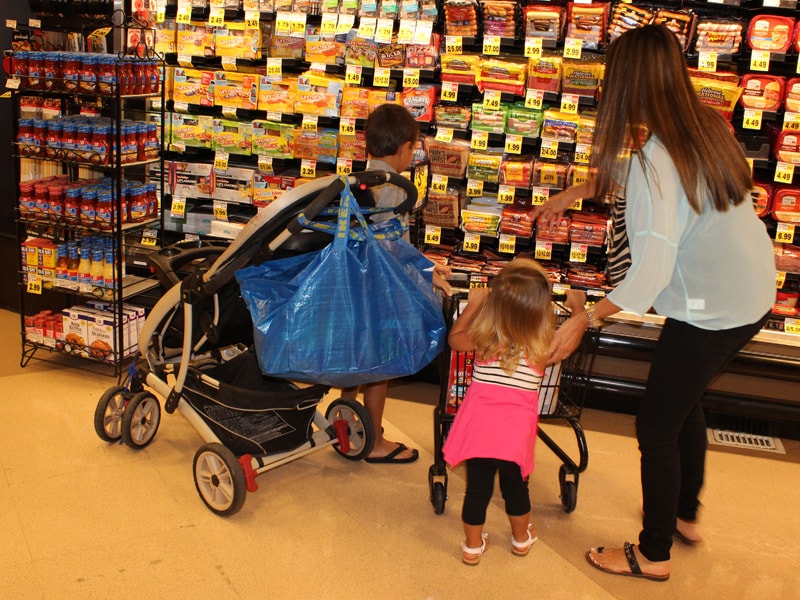
4) Have baby sit in the child seat built into the cart
One nice thing about this situation is, it really is temporary. Once your baby can sit well with support, there are shopping cart covers (such as the Leachco Prop’r Shopper) designed to help support younger babies so they can sit in the child seat built into the cart. Unlike setting the seat on top, having the baby sit directly in the child seat is safe; the center of gravity is lower and the cart was designed for a child to sit there. At around six months, many babies are capable of sitting with support in the cart.
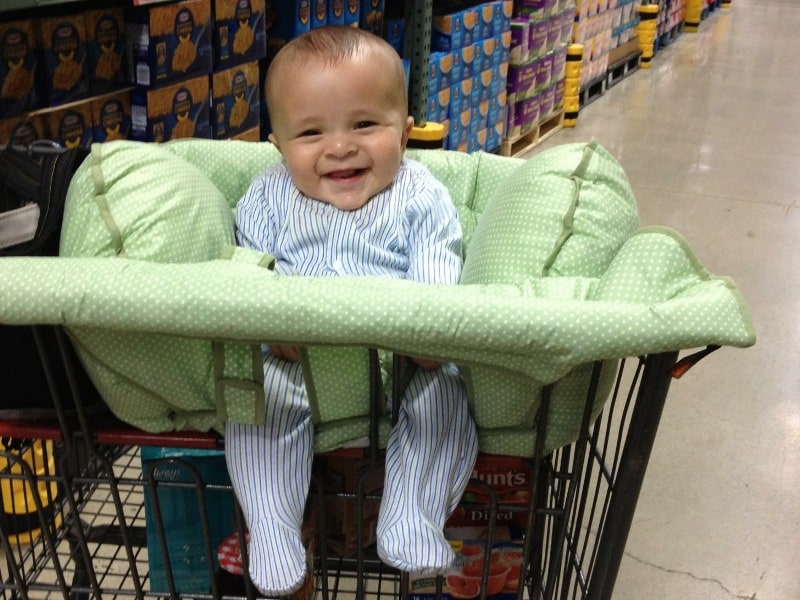
5) Use gadgets meant to solve the shopping cart problem
Since shopping with an infant is something almost every parent will have to do at least once in a while, some interesting inventions have been developed with an eye toward making it both easy and safe.
The SafeDock is a device permanently installed on top of carts at some stores which is intended to provide a place to safely buckle the seat onto the cart. While this is better than just setting the seat on top, and eliminates the potential to damage the seat’s locking mechanism, it requires the parent to remember to buckle the child into the seat as well as buckle the seat securely to the SafeDock. It also doesn’t eliminate the dangers of the cart being top-heavy. In a similar vein, the LullaBelay hangs the carrier from the shopping cart handle. This seems like it could tip the cart over depending on how weight is distributed, not to mention you or someone else could easily wind up kicking the car seat while walking around the store.
Another recent innovation are shopping cart hammocks. As the name suggests, they suspend baby across the cart in kind of a “sling” and the car seat isn’t used at all. While I haven’t had the opportunity to try one myself, it does seem like it would be worth checking out. Obviously it’s really only appropriate for infants who can’t move around much on their own or try to climb out.
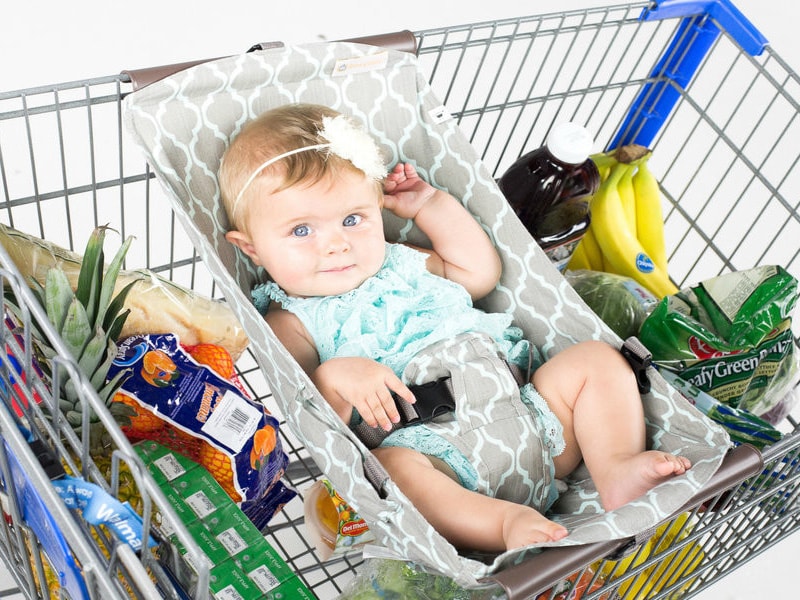
What about shopping with more than one child?
Having more than one child means you may have to bring an extra adult along or try to get creative. But there are certainly safe ways to shop with multiple kids without using the car seat in a dangerous way.
If you have an older child and an infant, the big kid might be able to handle pushing the stroller with the baby in it while you push the cart, or vice versa. This “Buggy Bench” might also be worth a look; it isn't appropriate for an infant but could be useful for older babies or toddlers in some situations.
One mom shared her idea here on her blog: she attaches two carts together using the seat belt straps from one of the carts. You could probably rig up something similar with a stroller and a cart, too.
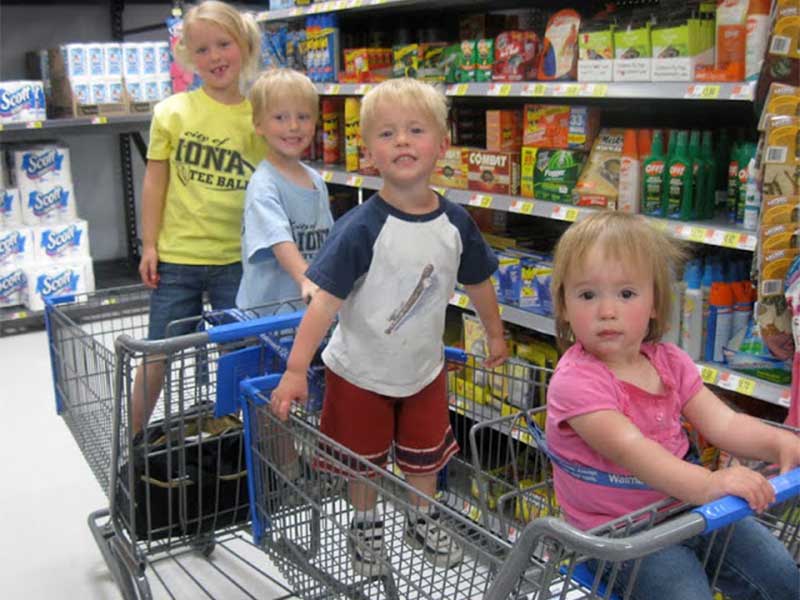
Imagine the possibilities!
In researching this article, I came across some really cool solutions for shopping safely with infants and toddlers. My own expertise is in child passenger safety, so my primary concern is that your child be safe in the car and in the car seat. But as a mom myself, I understand how hard it can be to balance safety and practicality. Hopefully you now have some ideas that will work for you in real life. There are probably more that I haven’t even come across yet.
Ultimately, as long as you have the baby in a place where they’re comfortable and safely positioned (breathing not obstructed, not going to fall or get injured, and aren’t using the car seat, cart, stroller, or any other product in a way that goes against the manufacturer’s instructions), there’s still plenty of room for creativity here. Happy, safe shopping!
